Bells & whistles
A complete list of options, with pricing and detailed descriptions can be found under Frame Options and Accents...
Stainless steel lettering
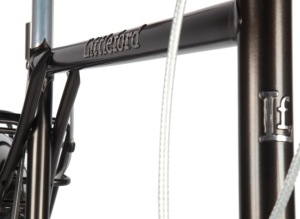 The Littleford name and initials are laser cut from stainless steel sheet, hand formed and brazed onto the top tube (or down tube) and head tube. This makes for a snazzy, yet rugged identifier that protects the tubing and paint from unfriendly hitching posts, errant bar-ends and other mishaps. They are a popular, practical option on Littleford bikes. The Littleford name and initials are laser cut from stainless steel sheet, hand formed and brazed onto the top tube (or down tube) and head tube. This makes for a snazzy, yet rugged identifier that protects the tubing and paint from unfriendly hitching posts, errant bar-ends and other mishaps. They are a popular, practical option on Littleford bikes.
|
Internal brake cable housing
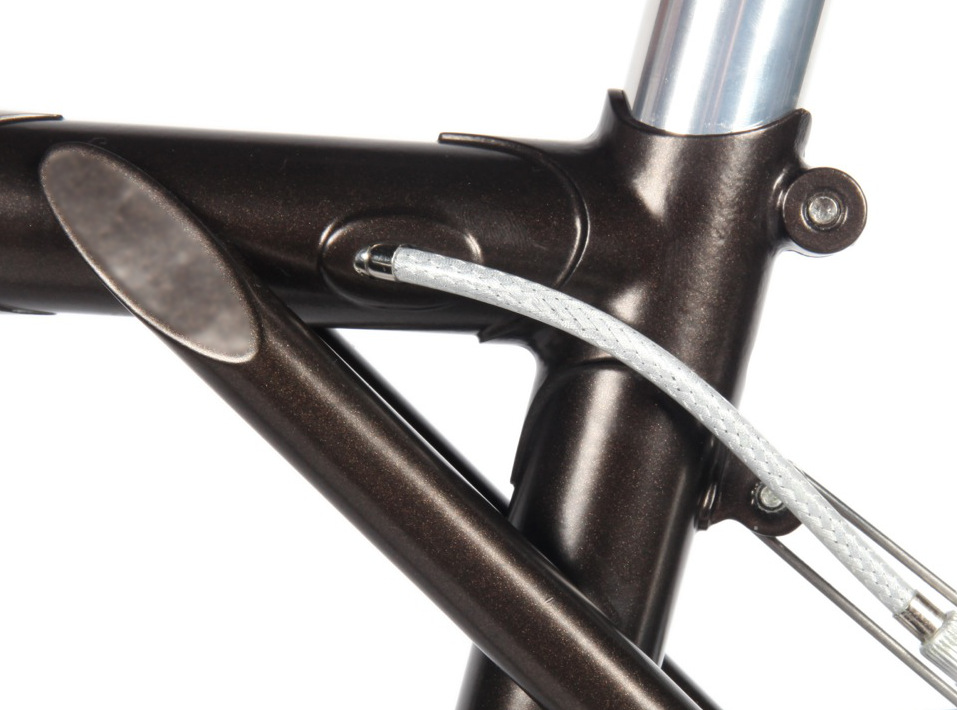 Rear brake cable is routed through stainless tubing inside the top tube. This protects the cable from snags or other potential damage on tour. Also available with automatically coupling internal tubing, for S&S frames. (See Frame Options Pricing for details.) Entry and exit ports are fabricated in-house. Internal brake cable routing comes standard on Littleford Classic Touring bikes. Rear brake cable is routed through stainless tubing inside the top tube. This protects the cable from snags or other potential damage on tour. Also available with automatically coupling internal tubing, for S&S frames. (See Frame Options Pricing for details.) Entry and exit ports are fabricated in-house. Internal brake cable routing comes standard on Littleford Classic Touring bikes.
|
Stainless rack surfaces
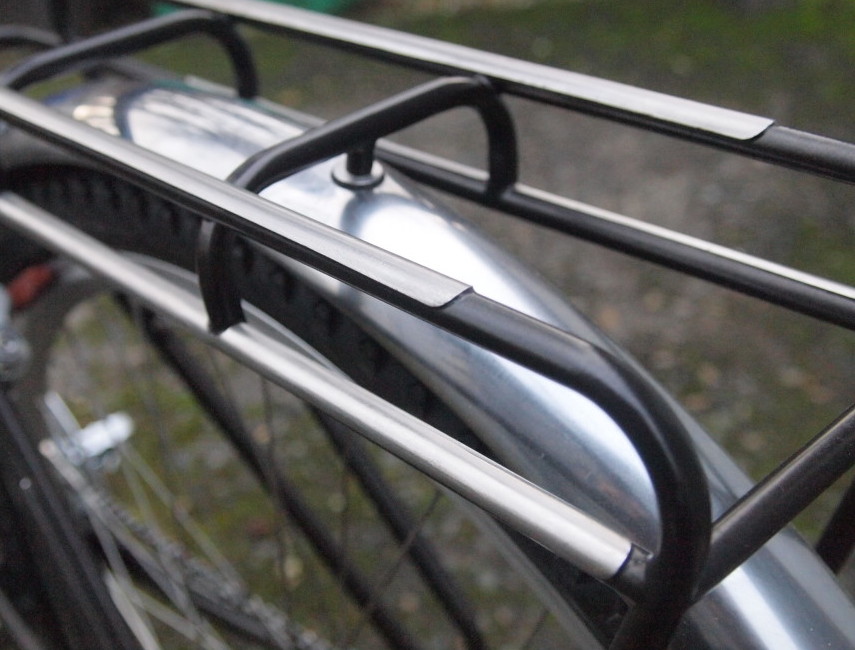 For extra durability, front or rear rack work surfaces can be armored in stainless steel. A combination of hand cut and shaped 7/16″ stainless tubing and half-rounded 1/8″ stainless bar protects rack surfaces from pannier hooks and backs, top loads and random nicks and scrapes. The brazed, half-rounded 1/8″ bar also serves well as a chainstay protector. Prices and more information about these options found under Frame Options and Accents. For extra durability, front or rear rack work surfaces can be armored in stainless steel. A combination of hand cut and shaped 7/16″ stainless tubing and half-rounded 1/8″ stainless bar protects rack surfaces from pannier hooks and backs, top loads and random nicks and scrapes. The brazed, half-rounded 1/8″ bar also serves well as a chainstay protector. Prices and more information about these options found under Frame Options and Accents.
|
Rack fender bosses
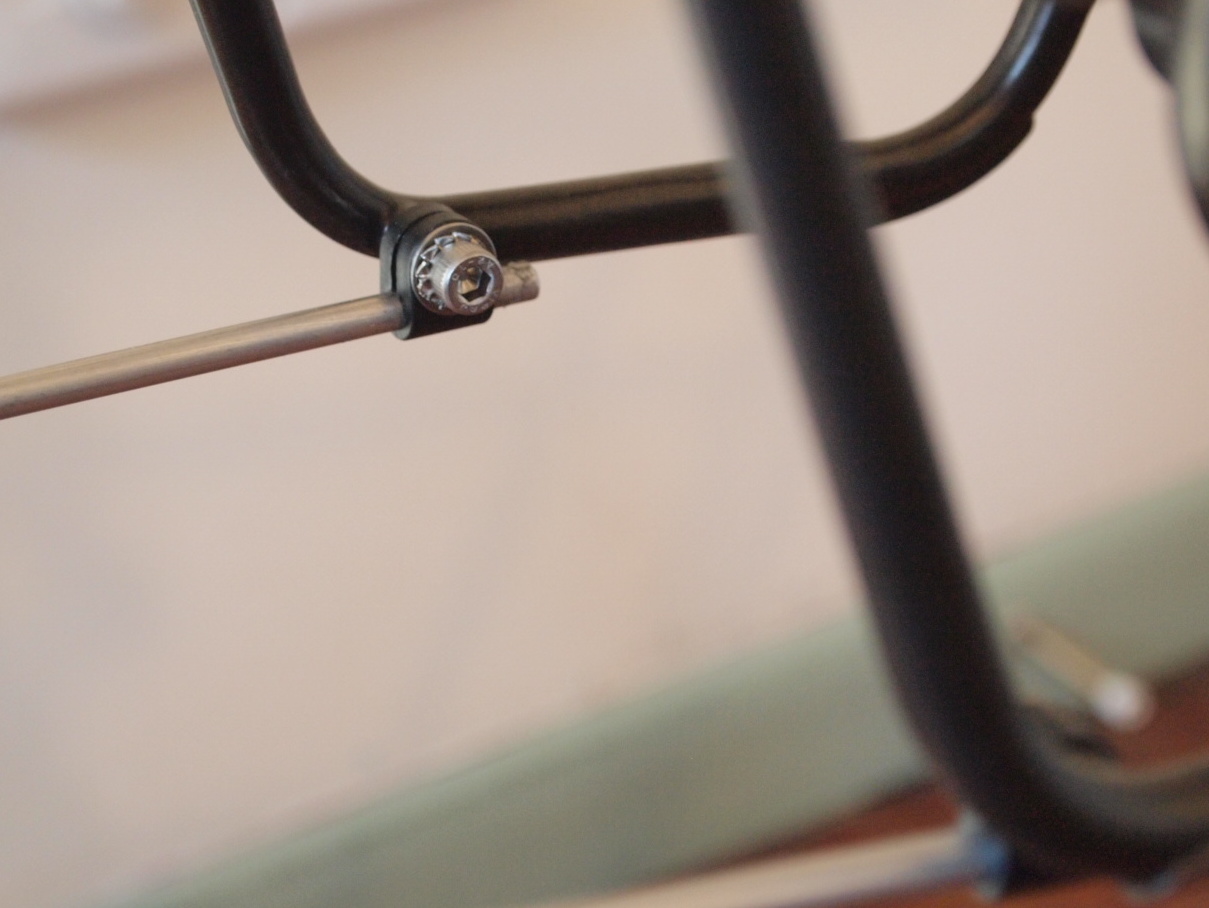 Eyelets for fender strut mounting (at right) and for direct mount under front and rear rack cross members (above photo) ensure a rattle-free ride, and increase the lifespan of the fender by dampening continual vibration that can eventually lead to fatigue cracks, even in a durable stainless steel fender. For bikes that will be ridden with and without racks, stays can be attached traditionally at the dropouts, or an additional, second set of fenders with longer struts can be ordered along with the build. Eyelets for fender strut mounting (at right) and for direct mount under front and rear rack cross members (above photo) ensure a rattle-free ride, and increase the lifespan of the fender by dampening continual vibration that can eventually lead to fatigue cracks, even in a durable stainless steel fender. For bikes that will be ridden with and without racks, stays can be attached traditionally at the dropouts, or an additional, second set of fenders with longer struts can be ordered along with the build.
|
Chainstay guard
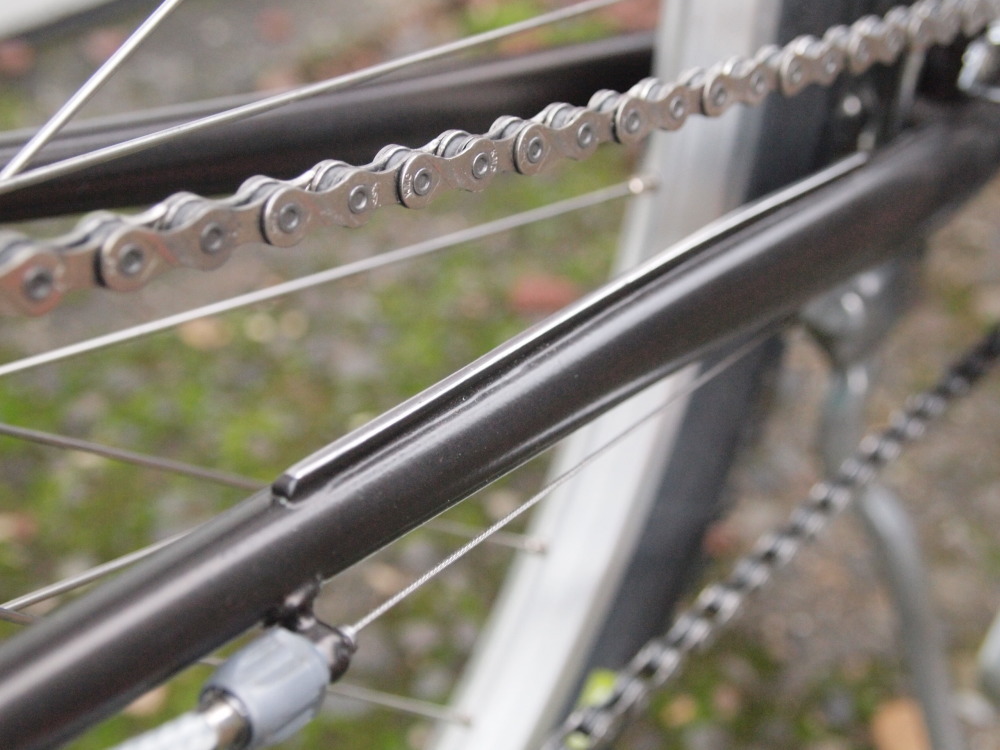 Hard shifts and bouncy roads can cause the chain to do a number on the drive-side chainstay. There are plenty of chainstay guards out there. Homemade electrical tape ones, stretchy Velcro ones, even fancy leather ones that you sew on yourself. This is a simpler, more elegant solution. A segment of hand formed 1/8″ stainless steel bar is brazed along the top of the chainstay, tirelessly repelling the most brutal chain strikes, forever. Hard shifts and bouncy roads can cause the chain to do a number on the drive-side chainstay. There are plenty of chainstay guards out there. Homemade electrical tape ones, stretchy Velcro ones, even fancy leather ones that you sew on yourself. This is a simpler, more elegant solution. A segment of hand formed 1/8″ stainless steel bar is brazed along the top of the chainstay, tirelessly repelling the most brutal chain strikes, forever.
|
Kickstand plate
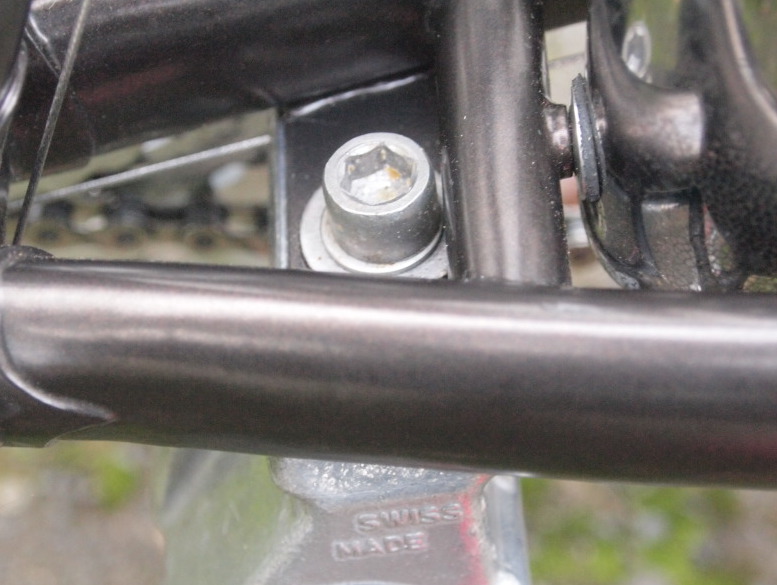 A substantial plate of 1/8″ stainless bar is cut to width, mitered and brazed flush with the bottom of the chainstays. The width fits precisely between the ridges cast into the kickstand base, so it’s self centering as the bolt is tightened. I usually equip touring bikes with the Pletscher Double kickstand, which is made in Switzerland, possibly of Valyrian aluminum. Elegant, clever, and strong, it’s everything I’ve ever wanted in a kickstand. A substantial plate of 1/8″ stainless bar is cut to width, mitered and brazed flush with the bottom of the chainstays. The width fits precisely between the ridges cast into the kickstand base, so it’s self centering as the bolt is tightened. I usually equip touring bikes with the Pletscher Double kickstand, which is made in Switzerland, possibly of Valyrian aluminum. Elegant, clever, and strong, it’s everything I’ve ever wanted in a kickstand.
|
|
Integrated light mount
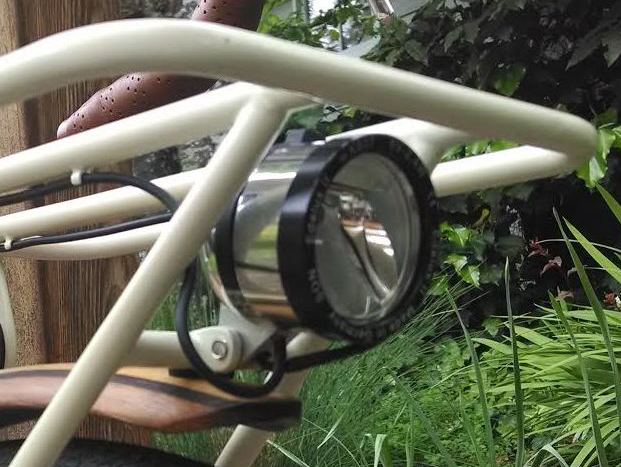 Dedicated lights mounts can be brazed onto racks, fenders, fork blades or seat stays. The mount locations is often some compromise between optimal beam clearance and the ability to remove fenders or racks, or both, without sacrificing generator lighting. Integrated lighting is one of the more thoughtful processes that goes into making a truly cohesive touring bike, and I’m happy to shine some more light with discussion. Dedicated lights mounts can be brazed onto racks, fenders, fork blades or seat stays. The mount locations is often some compromise between optimal beam clearance and the ability to remove fenders or racks, or both, without sacrificing generator lighting. Integrated lighting is one of the more thoughtful processes that goes into making a truly cohesive touring bike, and I’m happy to shine some more light with discussion.
|
Integrated u-lock holster
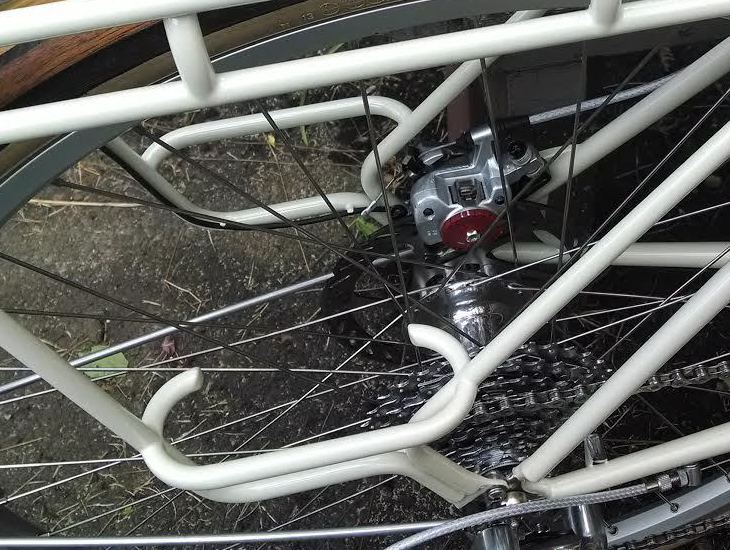 Brazed discreetly into the rear rack, the proprietary open sleeve design ensures that any preferred size U-lock goes in easy, stays put, and stays quiet… even over rough terrain. (All purpose hint: rattling within the lock, between the barrel and U-portion of the lock, can be eliminated by adding an extra o-ring to each end of the U, which removes any play. The O-rings can be found at many hardware stores.) Brazed discreetly into the rear rack, the proprietary open sleeve design ensures that any preferred size U-lock goes in easy, stays put, and stays quiet… even over rough terrain. (All purpose hint: rattling within the lock, between the barrel and U-portion of the lock, can be eliminated by adding an extra o-ring to each end of the U, which removes any play. The O-rings can be found at many hardware stores.)
|
Reversible canti bosses
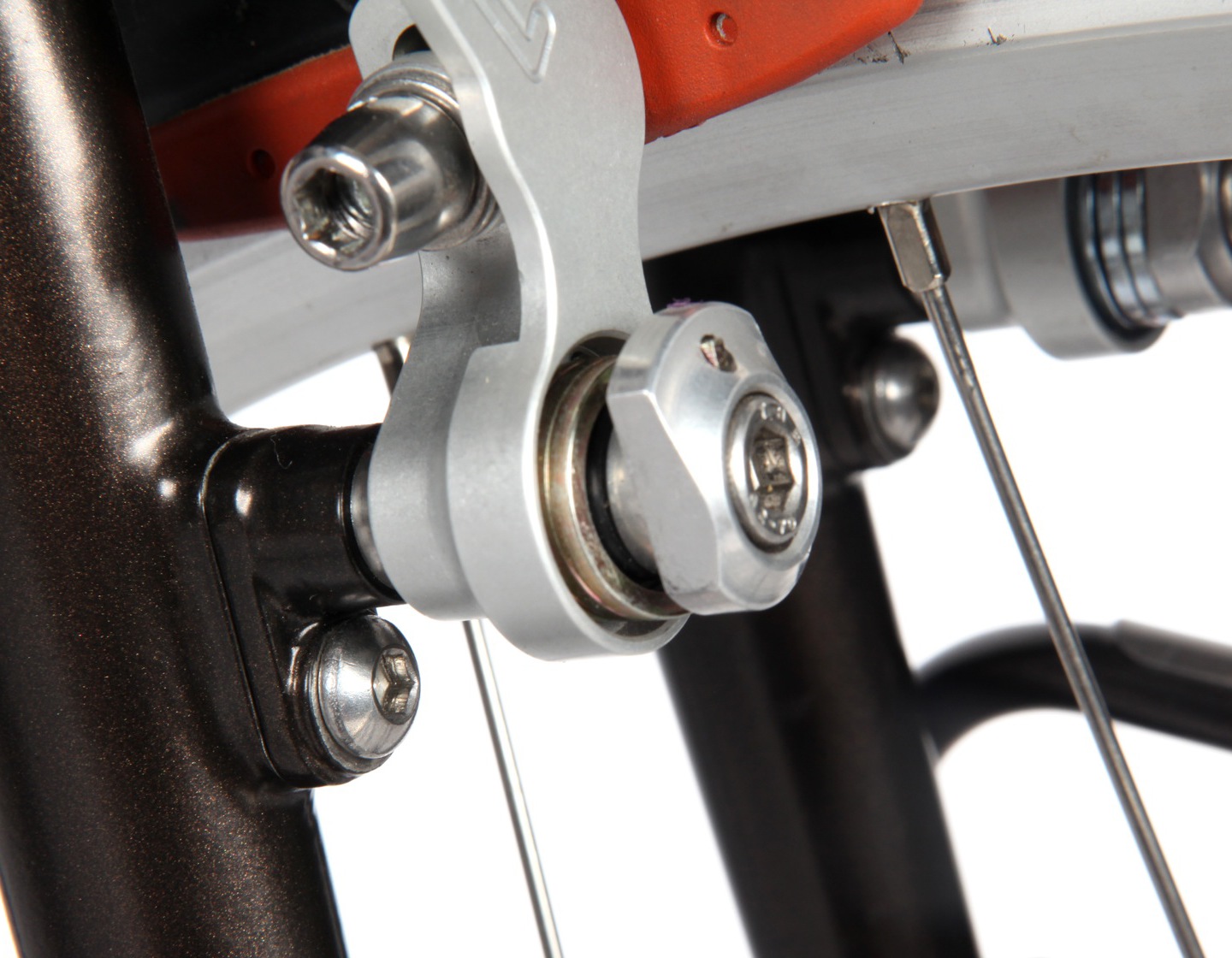 Now you can have “just-right” 650B wheel sizing without the liability of an irreplaceable wheel in the world’s farther reaches. One mount bolt is exposed, the other is embedded inside the boss. Just unthread the bolts, flip the stainless steel bosses upside down and reattach to switch from 650B to 26″ canti spacing, or vice versa. Now you can have “just-right” 650B wheel sizing without the liability of an irreplaceable wheel in the world’s farther reaches. One mount bolt is exposed, the other is embedded inside the boss. Just unthread the bolts, flip the stainless steel bosses upside down and reattach to switch from 650B to 26″ canti spacing, or vice versa.
|
|
|
|









